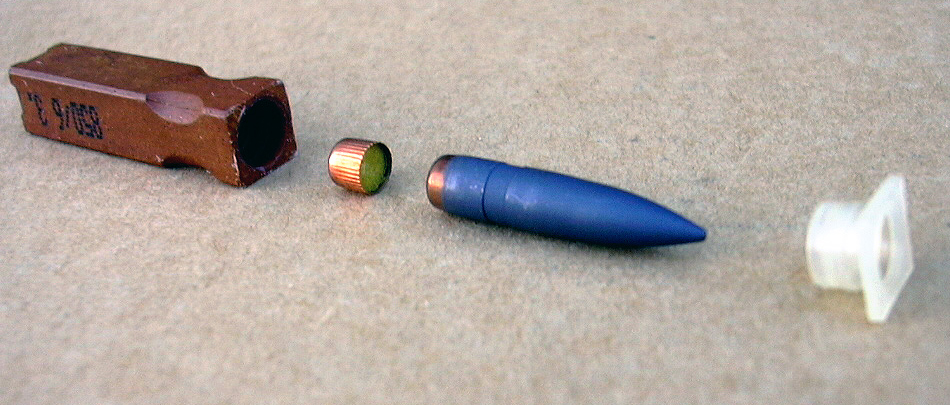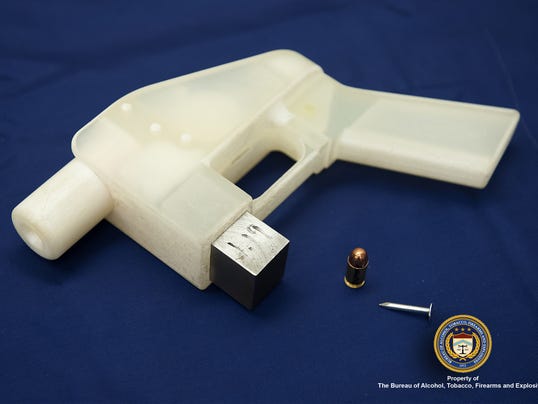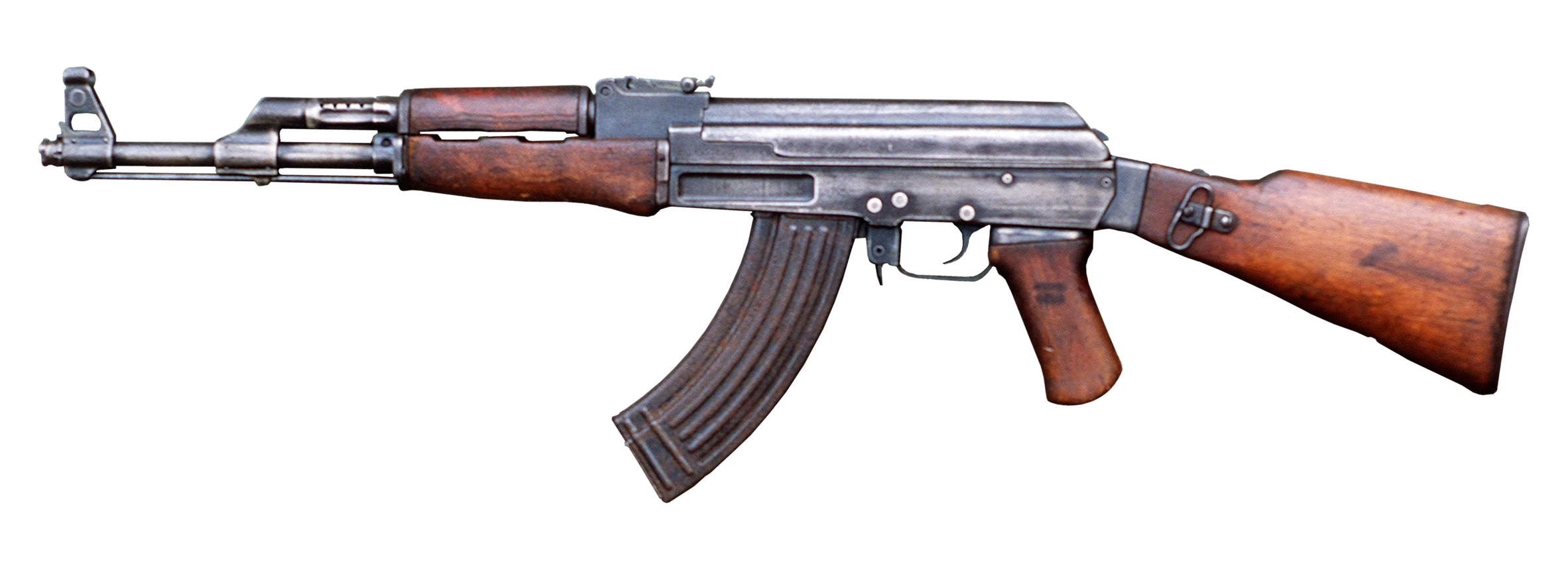The Uncanny Valley is the phenomenon where, as depictions of people become more life-like, they reach a point where they become really creepy. It's a popular idea, and I've not heard any ideas that conclusively explain why we react worse to things that are almost-but-not-quite-like us than to things that are very different from us.
I have my own theory, which is that our ability to see things varies from object to object. With things that we're familiar with, we are able to see in nuanced detail. An example of this is the "all black people look alike" phenomenon.
This kind of selective myopia happens in other aspects of our lives. I realized this a little while ago while thinking of a coworker of mine. He's a fantastic guy who, in addition to his day job, is very active in his religion. He does counseling, volunteer work, and has become our building's de facto chaplain (we don't have a lot of public prayers, but sometimes we eat together and he gives a blessing that is moving poetry). He isn't aggressive about his beliefs or anything, but they are a part of all aspects of his life, down to his coffee mug.
My beliefs are, in many important ways, quite similar to his. But they are also different in some meaningful and irreconcilable ways. This got me to wonder what he thinks of his heretic neighbors. Does he see the similarities, or the differences? I don't know about him (we're not close enough that we would talk about this sort of thing), but there are a lot of other people like him who seem to only see the differences.
I think that we encounter this all the time. We each have a philosophical uncanny valley. This is where a belief is very similar to our own, but different enough that it's all we can see. It happens with religions (which is why Christians and Muslims seem to hate each other, but not as much as Sunnis and Shiites). And it happens with just about everything on the internet.
I bring this up so that we can be aware of this characteristic of ourselves. Maybe we can learn that there is more to see in others than their otherness.
Sunday, May 18, 2014
Thursday, May 15, 2014
Saturday, May 03, 2014
Printed Guns and other Unicorns
3D-Printed guns are becoming quite the bugaboo in the public consciousness. Since the primary medium of 3D printing is various plastics, I'm going to use 'printed gun' and 'plastic gun' interchangeably here.
My co-founder of this Forum, Eric, mentioned recently that he considered posting about printed guns, but decided not to because of the politics behind the issue. I wish to present some facts in context. I'll say nothing about "rights" or "what should happen" here. Maybe some other time though.
This post isn't about politics, it's about the rainbow-farting unicorn that we call a plastic gun.
A plastic gun has several problems that are managed nicely by metal in firearms.
For example, if you want your firearm to be a "repeating firearm", or one that can shoot more than one time in a row, you're going to need a system of ejecting spent cartridges and chambering new ones. ("Repeating" usually means the next round is loaded manually, like in a lever-action. "Semi-Automatic" would also be correct here, if the weapon ejects and loads a cartridge after firing automatically.)
The inside of a currently-firing cartridge is under extremely high pressure and heat. This is why brass is so important in modern ammunition. Brass has high enough temperature resistance that a brass cartridge won't melt and stick to the inside of the chamber. Every time your gun ejects a spent shell, it's also ejecting a great deal of heat. This heat ejection will usually prevent an occurrence called "cookoff", where the chamber is so hot that the propellant in the cartridge combusts from residual heat, instead of the fire from the primer being struck.
Cookoff is extremely dangerous, as it does indeed make guns fire when the trigger is not touched. It's a problem in some current military guns, and those should be best-of-breed.
You may say at this point, "What about Caseless Ammunition?" Great question. First, the lack of a case means that the gun can't expel heat along with a spent shell. That's bad for plastic's structural integrity. Also, caseless ammunition still has a case, it just burns with the rest of the propellant when fired. But it isn't quite the same compound as the primary propellant in the cartridge body. It has to be shock-resistant and strong, so it's polymerized. These extra polymers burn when fired, and leave yet more fouling behind than a cased round does. Oh, and see that primer in the picture? Brass.
While we're here, let's talk about fouling. When you fire a typical small arm, hot gases and smoke are generated. When hot gases and smoke aren't hot anymore, they're just gunk that builds up a little more every single time you fire the gun. There is also typically a small amount of propellant--it's called smokeless powder in modern firearms, but it's really just less smoky and has a bigger punch than black powder--that doesn't ignite when the cartridge is fired. The low end is around 1% of the available propellant unburned after firing. I've seen much higher, especially in the case of guns that fire rounds that were originally designed for longer barrels. (For example, a revolver firing .22 caliber long rifle rounds.) If the bullet is pushed out the front of the barrel before some powder ignites, then the enormous heat and pressure stored in the gun's barrel quickly drops and the powder doesn't burn, instead becoming fouling on the inside of the gun.
These three concepts; Hot moving parts, the incredible heat and pressure inside the barrel and chamber, and
fouling, are the main issues with building a fully-realized "plastic gun."
The first problem is containing the explosion that you create when you fire a round. That's what the chamber and barrel do in a typical metal gun. Most plastics have nothing approaching the tensile strength of steel, and even when they come close, they'll still melt under heat and pressure. In other words, it's hard to make a plastic barrel that won't explode and hurt you. (And even well-made metal guns sometimes blow up and hurt the shooter during use. Google Kaboom and you'll see what I mean.)
And plastic's structural integrity isn't the only problem. Plastic also creates residue and smoke when heated, so this introduces yet another source of fouling.
Some guns are highly resistant to fouling-related problems, like the famously reliable AK-47. Many guns need cleaning after each trip to the range, and many of those will misfire at the range due to fouling from just a few fired rounds. And these are well-built metal guns. That's why I could break-down, clean, and reassemble my .22 rifles in my sleep. I've had to clean them a lot because they don't shoot reliably when dirty.
I'm not a materials science graduate. If you are, and you want to make a real plastic gun, here are some problems that need fixing:
I saw the video of the 9mm plastic handgun, too. But remember, they still needed a metal firing pin for that gun, and the 9mm round inside was a standard, metal-cased round with a normal metal primer. And they could only shoot it once.
It's not undetectable to a metal detector as a "plastic gun" would presumably be, it's likely to blow up and hurt you on first use, and anyone with a modern conventional gun will have an enormous advantage.
I've seen barrels made of carbon, which has very good heat resistance, but tends to be fragile. Maybe a handgun could be printed with polymerized carbon?
Who knows. But for now, there's no such thing as a plastic gun in the true sense. This guy seems to have got closer to it than anyone else, but never produced a working model.
My co-founder of this Forum, Eric, mentioned recently that he considered posting about printed guns, but decided not to because of the politics behind the issue. I wish to present some facts in context. I'll say nothing about "rights" or "what should happen" here. Maybe some other time though.
This post isn't about politics, it's about the rainbow-farting unicorn that we call a plastic gun.
A plastic gun has several problems that are managed nicely by metal in firearms.
For example, if you want your firearm to be a "repeating firearm", or one that can shoot more than one time in a row, you're going to need a system of ejecting spent cartridges and chambering new ones. ("Repeating" usually means the next round is loaded manually, like in a lever-action. "Semi-Automatic" would also be correct here, if the weapon ejects and loads a cartridge after firing automatically.)
 |
| Semi-Automatic Operation |
The inside of a currently-firing cartridge is under extremely high pressure and heat. This is why brass is so important in modern ammunition. Brass has high enough temperature resistance that a brass cartridge won't melt and stick to the inside of the chamber. Every time your gun ejects a spent shell, it's also ejecting a great deal of heat. This heat ejection will usually prevent an occurrence called "cookoff", where the chamber is so hot that the propellant in the cartridge combusts from residual heat, instead of the fire from the primer being struck.
Cookoff is extremely dangerous, as it does indeed make guns fire when the trigger is not touched. It's a problem in some current military guns, and those should be best-of-breed.
 |
| From Wikipedia |
While we're here, let's talk about fouling. When you fire a typical small arm, hot gases and smoke are generated. When hot gases and smoke aren't hot anymore, they're just gunk that builds up a little more every single time you fire the gun. There is also typically a small amount of propellant--it's called smokeless powder in modern firearms, but it's really just less smoky and has a bigger punch than black powder--that doesn't ignite when the cartridge is fired. The low end is around 1% of the available propellant unburned after firing. I've seen much higher, especially in the case of guns that fire rounds that were originally designed for longer barrels. (For example, a revolver firing .22 caliber long rifle rounds.) If the bullet is pushed out the front of the barrel before some powder ignites, then the enormous heat and pressure stored in the gun's barrel quickly drops and the powder doesn't burn, instead becoming fouling on the inside of the gun.
These three concepts; Hot moving parts, the incredible heat and pressure inside the barrel and chamber, and
fouling, are the main issues with building a fully-realized "plastic gun."
The first problem is containing the explosion that you create when you fire a round. That's what the chamber and barrel do in a typical metal gun. Most plastics have nothing approaching the tensile strength of steel, and even when they come close, they'll still melt under heat and pressure. In other words, it's hard to make a plastic barrel that won't explode and hurt you. (And even well-made metal guns sometimes blow up and hurt the shooter during use. Google Kaboom and you'll see what I mean.)
And plastic's structural integrity isn't the only problem. Plastic also creates residue and smoke when heated, so this introduces yet another source of fouling.
Some guns are highly resistant to fouling-related problems, like the famously reliable AK-47. Many guns need cleaning after each trip to the range, and many of those will misfire at the range due to fouling from just a few fired rounds. And these are well-built metal guns. That's why I could break-down, clean, and reassemble my .22 rifles in my sleep. I've had to clean them a lot because they don't shoot reliably when dirty.
I'm not a materials science graduate. If you are, and you want to make a real plastic gun, here are some problems that need fixing:
- A non-metal barrel that is strong under heat, can take repeated cycles without failing, and won't produce fouling of its own. (Perhaps carbon.)
- The barrel must also hold shape internally so that the riflings aren't worn away. Without the riflings on the inside of the barrel, the bullet won't spin and fly straight.
- If it is a repeating firearm, cookoff must be prevented, as it is extremely dangerous. The presence of multiple rounds inside the gun and possible inadequate heat management means cookoff is possible, and will have to be designed around.
- Ammunition with a non-metal case, that won't introduce more fouling.
- Bonus Point: Did you remember the primer? It's the explosive cap at the end of the round that the firing pin hits. They're nearly always made of steel or brass. It shouldn't be a weaker material, because if the pressure in the cartridge causes it to melt or burst, you've got energy (and gunk) moving the wrong direction inside your gun. And that will lead to further fouling. Remember, a primer has to be strong enough not to explode from being dropped on the ground or careless handling, but weak enough to consistently fire by firing pin.
- And if the primer needs to be hard, so does the firing pin. Firing pins, again, are almost always made of steel in modern guns.
I saw the video of the 9mm plastic handgun, too. But remember, they still needed a metal firing pin for that gun, and the 9mm round inside was a standard, metal-cased round with a normal metal primer. And they could only shoot it once.
It's not undetectable to a metal detector as a "plastic gun" would presumably be, it's likely to blow up and hurt you on first use, and anyone with a modern conventional gun will have an enormous advantage.
I've seen barrels made of carbon, which has very good heat resistance, but tends to be fragile. Maybe a handgun could be printed with polymerized carbon?
Who knows. But for now, there's no such thing as a plastic gun in the true sense. This guy seems to have got closer to it than anyone else, but never produced a working model.
Subscribe to:
Posts (Atom)

